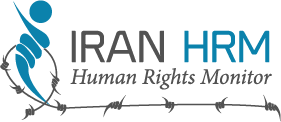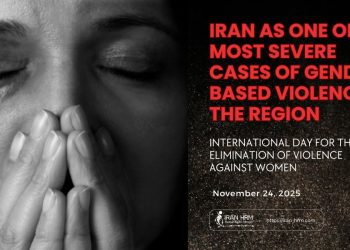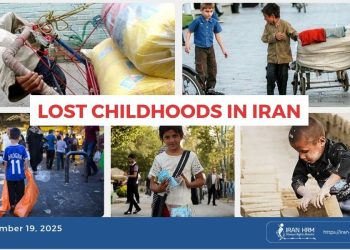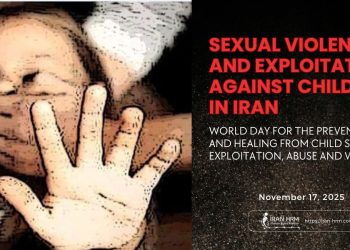Section 2
The Silenced Voices: Testimonies of the Victims of the Death Judges
Introduction
Since the very inception of the ruling regime in Iran, the judiciary has not functioned as an institution of justice, but rather as a formalized apparatus for systematic repression. The issuance of execution orders, long-term imprisonments, torture, and the systematic elimination of dissidents, intellectuals, and minorities have all been legitimized and institutionalized within this body. Judges appointed by the Supreme Leader have consistently ignored the fundamental principles of fair trial and due process, acting as direct perpetrators or enablers of crimes against humanity. The victims of this repressive system—from the mass executions of 1988 to the teenagers killed in the streets during the 2022 uprising—are living testaments to the inhumane nature of this judicial system.
The 1988 Massacre of 30,000 Political Prisoners
In the summer of 1988, over the course of less than three months, approximately 30,000 political prisoners across Iran were executed by firing squads, following a direct fatwa by Ayatollah Khomeini and implemented by so-called “Death Commissions.” The overwhelming majority of the victims were members or supporters of the People’s Mojahedin Organization of Iran (PMOI), who had already been tried and sentenced to prison terms. Yet in the summer of 1988, a single question “Are you still loyal to the organization?” was enough to send them to the gallows.
The Death Commissions
The composition of these commissions varied by province. In Tehran, the key members were:
- Hossein-Ali Nayyeri – Sharia Judge
- Ebrahim Raisi – Tehran Prosecutor
- Morteza Eshraghi – Prosecutor General of the Islamic Revolutionary Court
- Mostafa Pourmohammadi – Representative of the Ministry of Intelligence
Similar commissions operated in Isfahan, Shiraz, Mashhad, Tabriz, and Ahvaz, carrying out swift and secret executions.
Method of Execution
- Executions were predominantly carried out at night, under absolute secrecy.
- Prisoners were taken in groups from their cells, executed without family notification, and buried in mass graves.
- Families remained in the dark about the fate of their loved ones for months or even years.
Eyewitness Testimony
A mother of a Khavaran martyr recounts:
“They called my son’s name. As I reached the doorway, I only caught a glimpse of his eyes—he was saying goodbye with a look. No words. Just silence… and the gallows.”
Documented Figures and Sources
According to a book published by the People’s Mojahedin Organization of Iran and several credible advocacy sources, approximately 30,000 political prisoners were systematically executed during the summer of 1988. The names and detailed information of these victims have been collected in a comprehensive and verifiable documentation project, accessible at the following website:
🔗 Complete list of victims and documentation of the 1988 massacre
This platform remains one of the most extensive repositories regarding the scope of this crime against humanity and is regularly cited by legal professionals, international human rights advocates, and global justice mechanisms.
UN Acknowledgment and Call for Justice
The UN Special Rapporteur on Human Rights in Iran, Javaid Rehman, has officially referenced the 1988 massacre as a crime against humanity. In his reports, he has called for an independent international investigation into the roles of senior regime officials, including Ebrahim Raisi, in these mass executions.
Victims of the 2022 Uprising and Nationwide Repression
Voices for Freedom—Answered with Bullets
Overview
The nationwide uprising of the Iranian people in the autumn of 2022 (1401), sparked by the state killing of Jina (Mahsa) Amini in the custody of the so-called morality police, quickly swept across the streets. Women, teenagers, students, workers, and minorities stood at the forefront of this movement. The regime’s response to this call for freedom was bullets, executions, torture, sexual assault, and mass arrests.
According to human rights organizations, at least:
- 500 people were killed in the streets,
- 20,000 individuals were arrested,
- Dozens were executed or placed on death row,
- And countless families were subjected to threats, summons, and persecution.
Children and Teenagers Killed
One of the most horrifying aspects of this crackdown was the killing of minors—children and teenagers—many of whom died from direct gunfire, beatings, or torture:
| Name | Age | Location of Death | Cause of Death |
| Nika Shakarami | 16 | Tehran | Blunt force trauma to the skull |
| Sarina Esmailzadeh | 16 | Karaj | Beaten with baton |
| Kian Pirfalak | 9 | Izeh | Shot directly inside a vehicle |
| Sina Sanaeifar | 12 | Izeh | Gunshot wound to the abdomen |
| Parmida Yazdani | 16 | Tehran | Died under suspicious circumstances after being summoned |
State Executions
Alongside street killings, the regime’s judiciary rushed to issue death sentences for many detainees. These sentences were based on forced confessions obtained under torture, with no semblance of fair trial. Some of the known victims include:
- Mohsen Shekari (age 23): First protester executed
- Majidreza Rahnavard (age 23): Publicly hanged
- Mohammad Ghobadlou: Sentenced to death despite mental illness
- Seyed Mohammad Hosseini: Tortured and executed
- Saleh Mirhashemi, Majid Kazemi, Saeed Yaghoubi: Victims of the fabricated “Isfahan House” case
Rape, Torture, and Systematic Rights Violations
- Dozens of young women reported sexual violence in detention centers
- Secret facilities, solitary confinement cells, and torture centers such as Fashafouyeh, Qarchak, Ahvaz, and Mashhad were used to detain and abuse protesters
- Children and minors were interrogated without parents or legal representation
A grieving mother recounted: “I never imagined they wouldn’t bring my daughter back from Evin alive. They said she committed suicide, but her body was covered in bruises…”
Judicial and Intelligence Officials Involved
- Judge Salavati and Judge Amouzzad were among the primary issuers of death sentences
- Gholam-Hossein Mohseni-Ejei, as head of the judiciary, bore direct responsibility for the suppression
- Intelligence bodies such as IRGC Intelligence and the Ministry of Intelligence played central roles in the torture and interrogations







